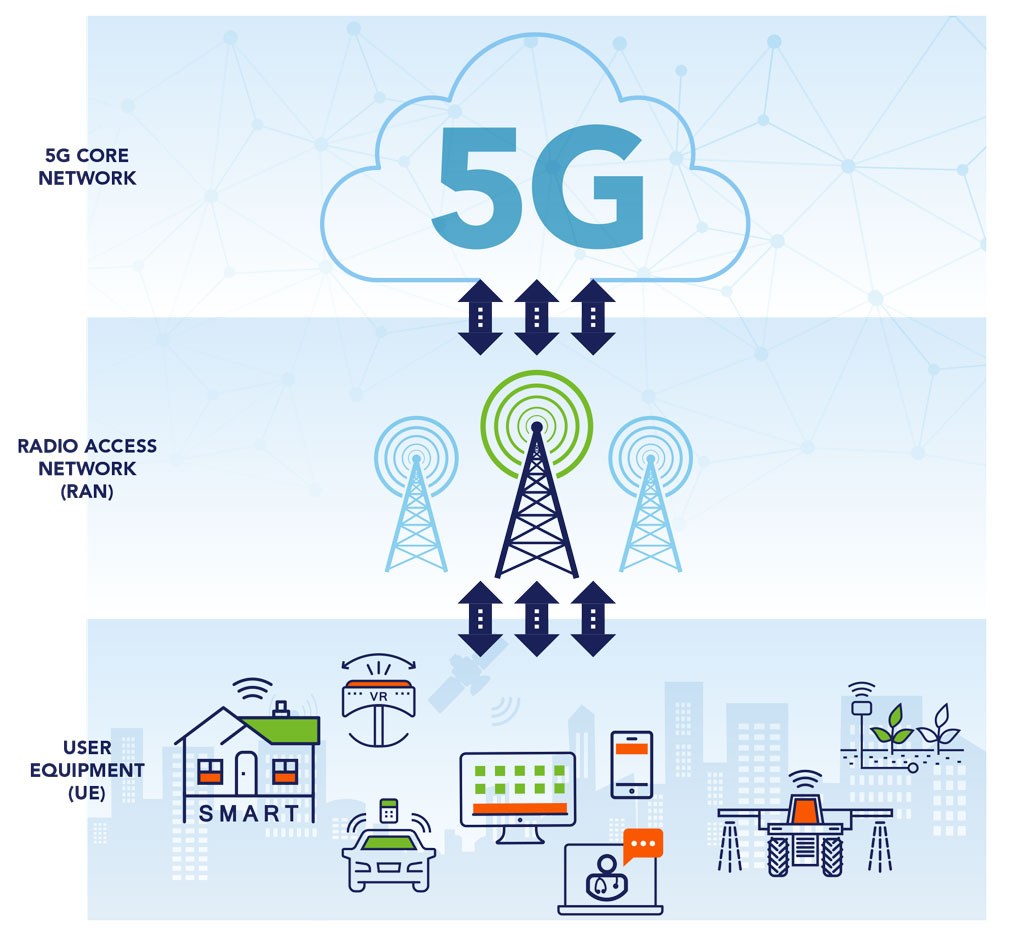The Revolutionary Hardware Of 5G Wireless Technology – Unlock The Future Today!
Hardware of 5G Wireless Technology
Introduction
Greetings, Readers! In this article, we will delve into the fascinating world of 5G wireless technology and explore the hardware behind this revolutionary innovation. As we all know, technology is constantly evolving, and with the arrival of 5G, we are entering a new era of connectivity and communication. The hardware components of 5G play a crucial role in making this technology a reality. So, let’s dive deep into the hardware of 5G wireless technology and understand its intricacies and significance.
1 Picture Gallery: The Revolutionary Hardware Of 5G Wireless Technology – Unlock The Future Today!

Table of Contents
What is 5G Wireless Technology?
Who Develops 5G Hardware?
When Was 5G Introduced?
Where is 5G Used?
Why is 5G Important?
How Does 5G Hardware Work?
Advantages and Disadvantages of 5G Hardware
Frequently Asked Questions (FAQ) About 5G Hardware
Conclusion
Final Remarks
What is 5G Wireless Technology?

Image Source: software.org
📡 5G wireless technology refers to the fifth generation of mobile networks that provide faster speeds, lower latency, and greater capacity compared to previous generations. It is designed to revolutionize various industries, including telecommunications, Internet of Things (IoT), autonomous vehicles, healthcare, and more. The hardware of 5G makes it possible to achieve these advancements and unlock new possibilities in our digital world.
Exploring the Components
The hardware components of 5G wireless technology consist of:
Base Stations
Small Cells
Antennas
Radio Access Network (RAN)
User Equipment (UE)
Base Stations
Base stations, also known as cell sites or cell towers, are an integral part of the 5G infrastructure. They transmit and receive wireless signals, enabling communication between user equipment and the network. These stations are equipped with advanced antennas and radios that support higher frequencies and data rates.
Small Cells
Small cells are compact wireless access points that enhance network coverage and capacity. They can be deployed in various locations, such as lamp posts, buildings, and street furniture. Small cells play a vital role in providing seamless connectivity in densely populated areas and indoor environments.
Antennas
Antennas are responsible for transmitting and receiving wireless signals. In 5G, antennas are designed to operate at higher frequencies, including millimeter waves. These high-frequency bands allow for faster data transmission and lower latency. Massive MIMO (Multiple-Input Multiple-Output) technology is also utilized in 5G antennas to improve network performance.
Radio Access Network (RAN)
The Radio Access Network is the part of the 5G infrastructure that connects the base stations and small cells to the core network. It manages the flow of data and ensures seamless communication between the user equipment and the network. RAN is responsible for tasks such as signal modulation, beamforming, and interference management.
User Equipment (UE)
User equipment refers to the devices used by individuals to access the 5G network, such as smartphones, tablets, and IoT devices. These devices are equipped with the necessary hardware, including 5G modems and antennas, to connect to the network and take advantage of its capabilities.
Who Develops 5G Hardware?
👥 The development of 5G hardware involves a collaborative effort between multiple entities, including telecommunication companies, equipment manufacturers, and technology providers. Companies such as Huawei, Ericsson, Nokia, Qualcomm, and Intel are at the forefront of developing 5G hardware components.
Telecommunication Companies
Telecommunication companies, also known as mobile network operators, play a crucial role in deploying and operating 5G networks. They work closely with hardware manufacturers to ensure the seamless integration of the hardware components into their existing infrastructure.
Equipment Manufacturers
Equipment manufacturers specialize in designing and manufacturing the hardware components required for 5G. These companies invest heavily in research and development to create cutting-edge technologies that meet the demanding requirements of 5G networks.
Technology Providers
Technology providers contribute to the development of 5G hardware by providing essential components and software solutions. They focus on areas such as network optimization, cybersecurity, cloud infrastructure, and device management.
When Was 5G Introduced?
📅 5G wireless technology was officially introduced in 2019, although its development and testing had been ongoing for several years prior. The International Telecommunication Union (ITU) established the specifications for 5G in 2017, defining the technical characteristics and performance requirements of this next-generation technology.
The Road to 5G
The journey towards 5G began with the deployment of 4G LTE (Long-Term Evolution) networks in the late 2000s. As the demand for faster and more reliable connectivity grew, the need for a new generation of wireless technology became evident. 5G aims to address the limitations of previous generations and provide a foundation for future innovations.
Where is 5G Used?
🌍 5G wireless technology is being used and deployed worldwide, offering enhanced connectivity and transformative capabilities across various sectors. Major cities in countries such as the United States, China, South Korea, and the United Kingdom have already implemented 5G networks, with plans for further expansion.
Urban Areas
Urban areas benefit greatly from 5G technology, as it enables faster internet speeds, improved public safety systems, and enhanced transportation infrastructure. Smart cities, with their interconnected networks and IoT devices, rely on 5G to provide seamless communication and real-time data exchange.
Rural Areas
5G has the potential to bridge the digital divide and bring high-speed connectivity to rural areas. By leveraging advanced wireless technologies, 5G can overcome the challenges of deploying traditional wired infrastructure in remote locations, providing internet access and enabling economic growth.
Why is 5G Important?
❓ 5G wireless technology holds immense importance due to its transformative capabilities and the numerous benefits it offers. Let’s explore some key reasons why 5G is crucial for the future:
Unprecedented Speed
With speeds up to 100 times faster than 4G, 5G enables lightning-fast downloads, seamless streaming, and real-time communication. This speed revolutionizes various industries, such as entertainment, e-commerce, telemedicine, and more.
Low Latency
5G significantly reduces latency, the delay between sending and receiving data. This low latency is crucial for applications that require instant response times, such as autonomous vehicles, remote surgeries, and augmented reality.
Massive Connectivity
5G can support a massive number of connected devices simultaneously. This capability is essential for the proliferation of the Internet of Things (IoT), where billions of devices, sensors, and machines will be interconnected to enable smart cities, smart homes, and efficient industrial processes.
Enhanced Reliability
5G networks ensure higher reliability and availability, allowing for mission-critical applications that demand uninterrupted connectivity. Industries like public safety, emergency services, and utilities can rely on 5G to provide robust and resilient communication.
Empowering Innovations
5G serves as a catalyst for innovation and unlocks new possibilities in various sectors. From augmented reality and virtual reality to autonomous vehicles and remote robotics, 5G technology paves the way for groundbreaking advancements that will reshape our lives.
How Does 5G Hardware Work?
🤔 To comprehend how 5G hardware works, we must understand the underlying technologies that power this revolutionary wireless technology. Let’s explore the key aspects:
Frequency Spectrum
5G utilizes a wide range of frequency bands, including low, mid, and high frequencies. Low-band frequencies offer wider coverage but lower speeds, while high-band frequencies (mmWave) provide incredible speeds but have limited range. Mid-band frequencies strike a balance between coverage and capacity.
Beamforming
Beamforming is a technique used in 5G to focus and steer wireless signals towards specific areas or devices. By directing the signal where it is needed, beamforming enhances the signal strength, improves coverage, and enhances the overall performance of the network.
Massive MIMO
Massive MIMO (Multiple-Input Multiple-Output) technology is a critical component of 5G hardware. It utilizes a large number of antennas at both the base stations and user equipment to transmit and receive multiple signals simultaneously. This technology improves spectral efficiency, increases capacity, and enhances user experience.
Network Slicing
5G introduces the concept of network slicing, which allows the network to be divided into multiple virtual networks, each serving specific applications or industries. Network slicing enables tailored connectivity, optimized performance, and efficient resource allocation based on the unique requirements of different use cases.
Virtualization
5G embraces network virtualization, where physical network functions are decoupled from the underlying hardware and implemented in software. This virtualization allows for more flexible and scalable networks, reducing costs, improving efficiency, and enabling rapid deployment of new services.
Advantages and Disadvantages of 5G Hardware
✅🚫 Let’s explore the advantages and disadvantages of 5G hardware:
Advantages of 5G Hardware
Blazing-Fast Speeds: 5G offers unprecedented speeds, allowing for quicker downloads, seamless streaming, and real-time communication.
Low Latency: The reduced latency of 5G enables instantaneous response times, ideal for time-sensitive applications like autonomous driving and remote surgeries.
Massive Connectivity: 5G can support a massive number of devices, paving the way for the Internet of Things (IoT) and interconnected smart ecosystems.
Enhanced Reliability: 5G networks ensure robust and reliable communication, crucial for mission-critical applications and emergency services.
Empowering Innovations: 5G technology unlocks new possibilities in various sectors, including augmented reality, autonomous vehicles, and remote robotics.
Disadvantages of 5G Hardware
Infrastructure Requirements: Implementing 5G requires significant infrastructure upgrades due to the need for denser networks and advanced hardware components.
Higher Costs: The deployment and maintenance of 5G networks involve substantial investments, both for telecommunication companies and end-users.
Network Coverage: The higher frequencies used in 5G have limited range, requiring more base stations and small cells to achieve widespread coverage.
Interference Challenges: The use of higher frequencies in 5G makes it susceptible to interference from physical obstacles such as buildings and trees.
Device Compatibility: Not all existing devices are compatible with 5G technology, necessitating the purchase of new devices for full access to its capabilities.
Frequently Asked Questions (FAQ) About 5G Hardware
🙋♂️🙋♀️ Let’s address some common questions about 5G hardware:
1. Can I use my current smartphone with 5G?
While some smartphones are 5G-compatible, not all existing devices support this technology. To access 5G networks, you may need to upgrade to a compatible device.
2. How does 5G differ from previous generations?
5G offers significantly faster speeds, lower latency, and enhanced capacity compared to previous generations. It is designed to enable transformative technologies and cater to the increasing demand for connectivity.
3. Will 5G replace Wi-Fi?
5G and Wi-Fi serve different purposes. While 5G provides wide-area coverage and cellular connectivity, Wi-Fi focuses on local-area coverage within homes, offices, and public spaces. Both technologies complement each other and will coexist.
4. Are there any health concerns associated with 5G?
Extensive research has been conducted on the potential health effects of 5G, and current evidence suggests that it does not pose significant risks. Regulatory bodies establish guidelines to ensure the safety of wireless technologies.
5. How soon can I expect widespread 5G availability?
The rollout of 5G networks is an ongoing
This post topic: Electronics
